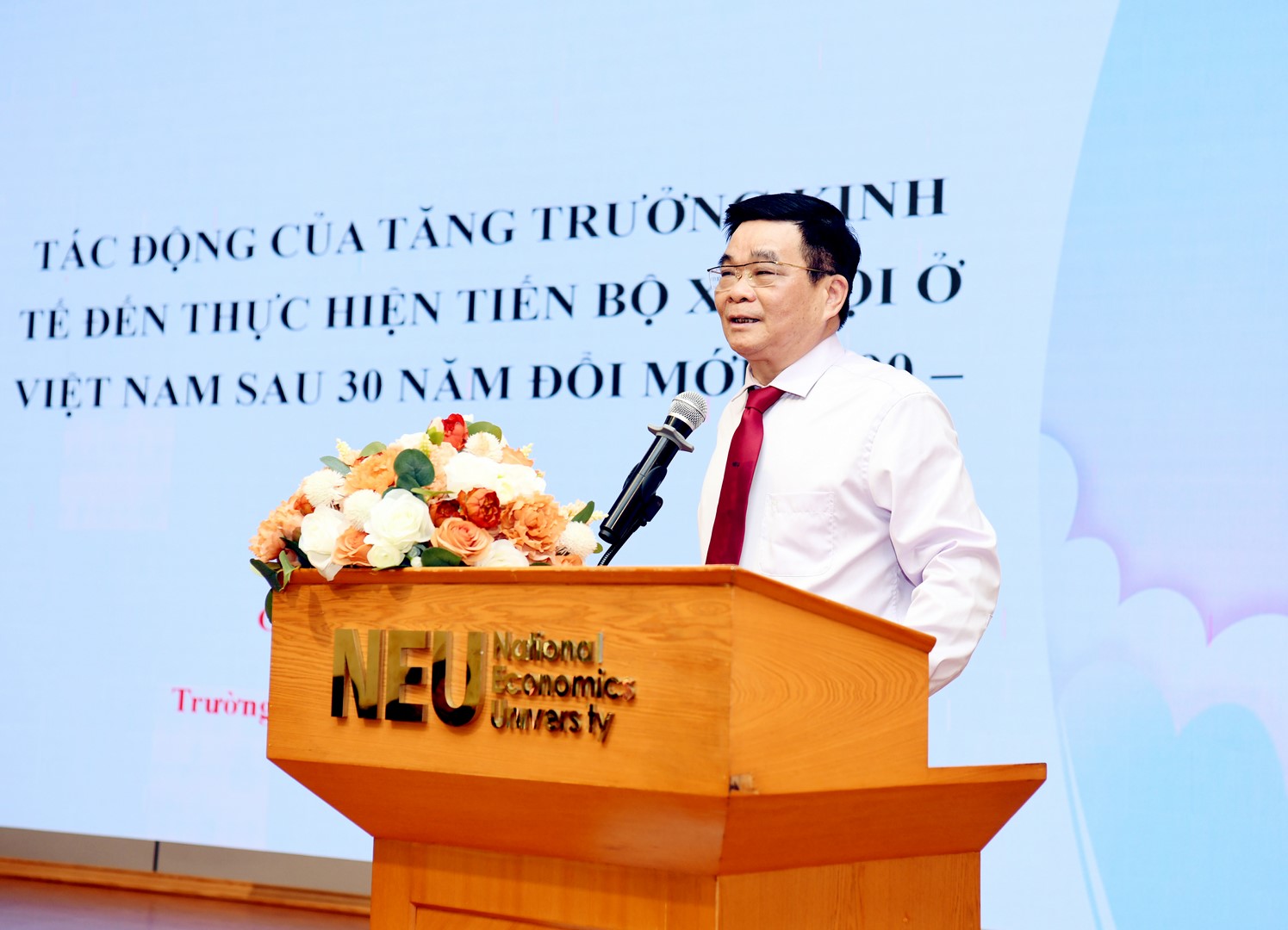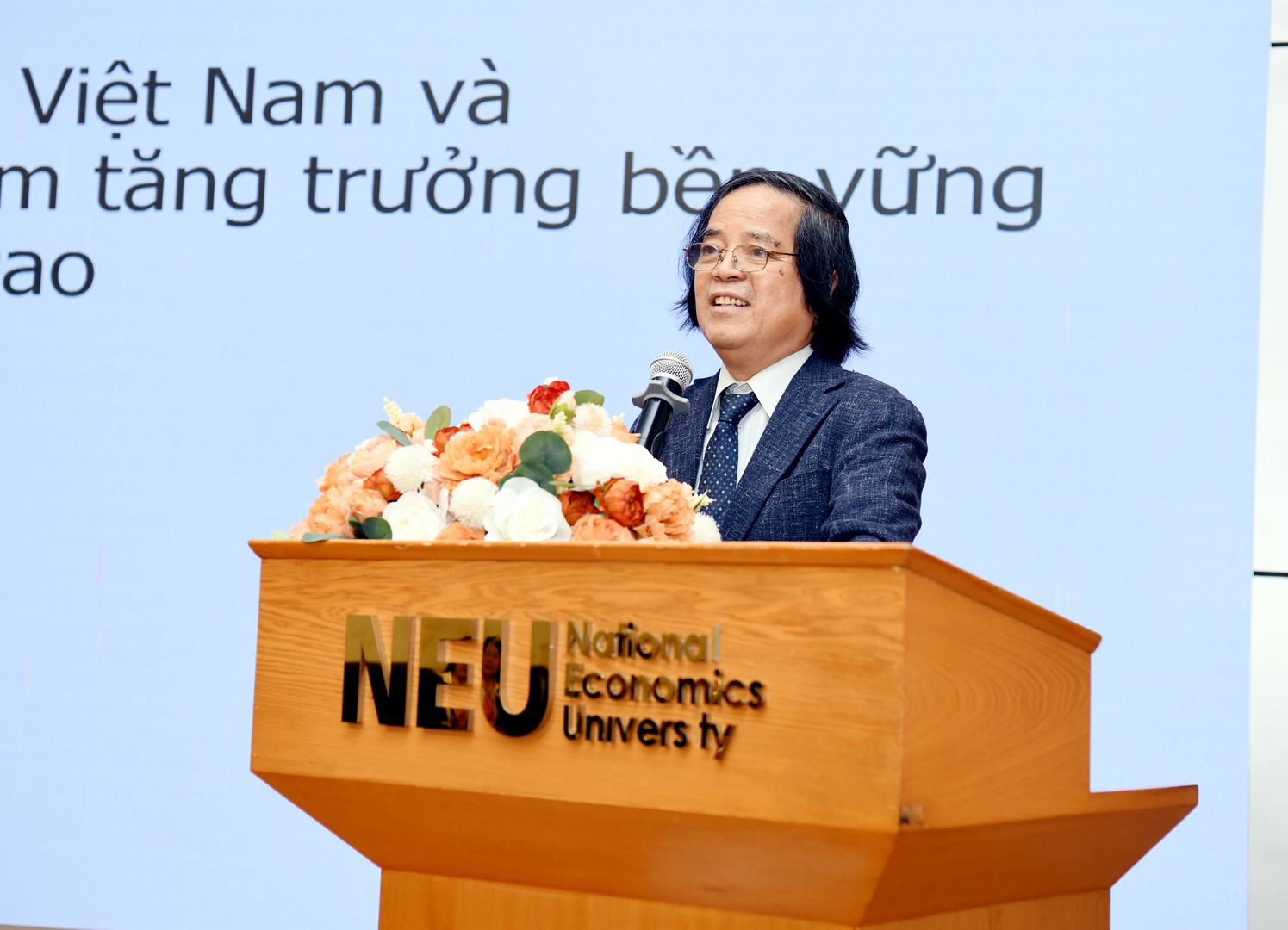
In the past three decades, Vietnam has made a strong transition from a centrally planned economy to a market-oriented economy. From an import-substitution economy, Vietnam has become one of the world’s largest open economies and export-oriented. Vietnam has shifted from a low-income agricultural economy to a new industrialized economy with relatively low average income.
According to the general assessment of many economists and economic researchers, the period from 2024 to 2030 is the decisive period for Vietnam to transform into an industrialized country according to the spirit of Vietnam’s Socio-Economic Development Strategy for the period 2021-2030.
In this context, the National Economics University organized the Policy Dialogue in the first quarter of 2024 with the theme “30 years of Vietnam’s development: Looking back at the past and responding to new challenges”.
In his speech at the Dialogue, Prof. Ngo Thang Loi said that Vietnam has always set high social development goals and has consistently exceeded them over the past 30 years.
Specifically, Prof. Loi said that in the past 30 years, Vietnam has overcome 2/3 of the challenges. The first challenge that Vietnam has overcome is food security in the period 1991-2000. The second challenge, according to Prof. Loi, is that Vietnam has escaped from the list of low-income countries. The remaining challenge that has not been overcome is to become an industrialized country by 2020.
“Vietnam has basically laid the foundation for an industrialized country,” said Prof. Ngo Thang Loi.
However, Vietnam’s development process has also revealed many shortcomings as the growth is showing signs of slowing down over time. The growth rate is tending to decrease and is not strong enough to create breakthroughs in social progress.
The quality of growth has been improving slowly (investment efficiency, labor productivity), especially in recent years and at a relatively low level compared to countries in the same period such as Vietnam (South Korea, Japan…), reducing the income growth potential of the economy.

Prof. Ngo Thang Loi speaking at the workshop. Source: NEU
Despite Vietnam’s strong economic growth in recent times, according to Prof. Loi’s evaluation, Vietnam’s development process has also revealed many shortcomings as the growth is showing signs of slowing down over time. The growth rate is tending to decrease and is not strong enough to create breakthroughs in social progress.
The quality of growth has been improving slowly (investment efficiency, labor productivity), especially in recent years and at a relatively low level compared to countries in the same period such as Vietnam (South Korea, Japan…), reducing the income growth potential of the economy.
An ideal path for Vietnam’s economic future
According to Prof. Tran Van Tho, Waseda University, Tokyo, with 30 years of innovation and development, Vietnam’s economy has achieved optimistic growth. Vietnam has transitioned from a poor country to a country with a low average income in 2008 and is now approaching a high average income level. Vietnam’s GNI per capita in 2022 is $3,939.

Prof. Tran Van Tho, Waseda University, Tokyo. Source: NEU
“Vietnam may reach a high average income level (over $4,300) by the mid-2020s,” said Prof. Tran Van Tho.
According to Prof. Tran Van Tho, in order to raise Vietnam from a high average income level to a high income level by 2045, avoid the middle-income trap and continue sustainable development in the two decades to come, Vietnam needs to accelerate structural transformation to increase productivity. Officially legalizing the informal sector and expanding the scale of enterprises to enhance accumulation and innovation capacity.
“The result is that the accumulation of capital will be strengthened and expanded in terms of efficiency and stimulates technological innovation,” Prof. Tho commented.
At the same time, Vietnam also needs to reform and develop production factors to efficiently allocate resources and promote structural transformation; as well as focus on providing skilled labor and encouraging R&D activities to promote structural transformation.
Prof. Tran Van Tho evaluates that in the next decade, industrialization, industrial structural transformation, and institutional reform to allocate efficient resources are factors that will increase productivity for Vietnam. At the same time, Vietnam needs to prepare for the era of growth based on innovation for the 2030s and beyond.
In the context of globalization, structural transformation and continuously increasing productivity will make Vietnam competitive in the international market. This is a condition for Vietnam to avoid the “sandwich position” – not being able to compete with the country that comes after with lower production costs, as well as not being able to compete with the country that comes before.









































